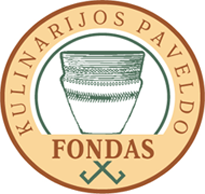Lithuanian cuisine
Overview of traditional and modern Lithuanian cuisine
Lithuanian cuisine is a reflection of the country's agricultural heritage and its historical influences from neighboring regions. It is characterized by hearty dishes, often featuring potatoes, rye, beets, greens, berries, and mushrooms. The cuisine has evolved over centuries, incorporating elements from various cultures that have interacted with Lithuania.
History[edit | edit source]
The history of Lithuanian cuisine is deeply intertwined with the country's political and cultural history. During the Grand Duchy of Lithuania, the cuisine was influenced by the Polish–Lithuanian Commonwealth, as well as by neighboring countries such as Russia, Germany, and Scandinavia.
Medieval Period[edit | edit source]
In the medieval period, Lithuanian cuisine was heavily influenced by the availability of local ingredients and the culinary practices of the nobility. The Royal Palace of Lithuania in Vilnius was a center of culinary innovation, where exotic spices and ingredients were introduced.
16th to 19th Centuries[edit | edit source]
During the 16th to 19th centuries, Lithuanian cuisine was shaped by the Polish–Lithuanian Commonwealth and the influence of Western Europe. The introduction of potatoes in the 18th century had a significant impact on the diet, becoming a staple food.
Traditional Dishes[edit | edit source]
Lithuanian cuisine is known for its hearty and filling dishes. Some of the most popular traditional dishes include:
- Cepelinai: Potato dumplings stuffed with meat, curd, or mushrooms, often served with sour cream and bacon.
- Šaltibarščiai: A cold beet soup made with kefir, often served with boiled potatoes.
- Kugelis: A baked potato pudding, sometimes with bacon or onions.
- Balandėliai: Cabbage rolls stuffed with meat and rice.
Ingredients[edit | edit source]
The primary ingredients in Lithuanian cuisine include:
- Potatoes: A staple in many dishes, introduced in the 18th century.
- Rye: Used in bread and other baked goods.
- Beets: Commonly used in soups and salads.
- Mushrooms: Foraged from the forests, used in various dishes.
- Dairy products: Including cheese, butter, and sour cream.
Cultural Influences[edit | edit source]
Lithuanian cuisine has been influenced by various cultures over the centuries. The Polish–Lithuanian Commonwealth brought Polish culinary traditions, while Russian and German influences are also evident in many dishes.
Modern Lithuanian Cuisine[edit | edit source]
Today, Lithuanian cuisine continues to evolve, incorporating modern cooking techniques and international influences. The Lithuanian Culinary Heritage Foundation promotes traditional Lithuanian foods and culinary practices.
Related Pages[edit | edit source]
Search WikiMD
Ad.Tired of being Overweight? Try W8MD's physician weight loss program.
Semaglutide (Ozempic / Wegovy and Tirzepatide (Mounjaro / Zepbound) available.
Advertise on WikiMD
|
WikiMD's Wellness Encyclopedia |
| Let Food Be Thy Medicine Medicine Thy Food - Hippocrates |
Translate this page: - East Asian
中文,
日本,
한국어,
South Asian
हिन्दी,
தமிழ்,
తెలుగు,
Urdu,
ಕನ್ನಡ,
Southeast Asian
Indonesian,
Vietnamese,
Thai,
မြန်မာဘာသာ,
বাংলা
European
español,
Deutsch,
français,
Greek,
português do Brasil,
polski,
română,
русский,
Nederlands,
norsk,
svenska,
suomi,
Italian
Middle Eastern & African
عربى,
Turkish,
Persian,
Hebrew,
Afrikaans,
isiZulu,
Kiswahili,
Other
Bulgarian,
Hungarian,
Czech,
Swedish,
മലയാളം,
मराठी,
ਪੰਜਾਬੀ,
ગુજરાતી,
Portuguese,
Ukrainian
Medical Disclaimer: WikiMD is not a substitute for professional medical advice. The information on WikiMD is provided as an information resource only, may be incorrect, outdated or misleading, and is not to be used or relied on for any diagnostic or treatment purposes. Please consult your health care provider before making any healthcare decisions or for guidance about a specific medical condition. WikiMD expressly disclaims responsibility, and shall have no liability, for any damages, loss, injury, or liability whatsoever suffered as a result of your reliance on the information contained in this site. By visiting this site you agree to the foregoing terms and conditions, which may from time to time be changed or supplemented by WikiMD. If you do not agree to the foregoing terms and conditions, you should not enter or use this site. See full disclaimer.
Credits:Most images are courtesy of Wikimedia commons, and templates, categories Wikipedia, licensed under CC BY SA or similar.
Contributors: Prab R. Tumpati, MD






